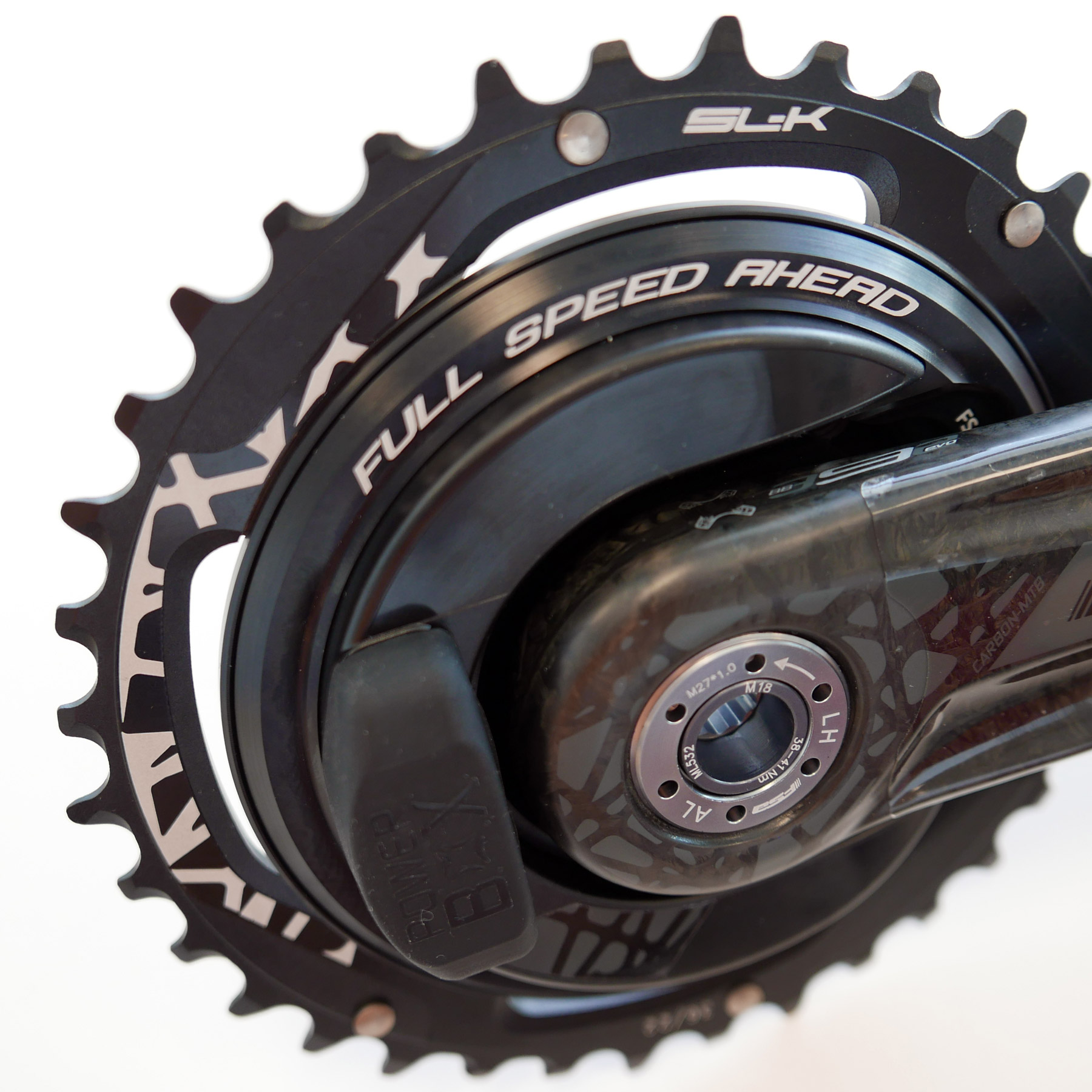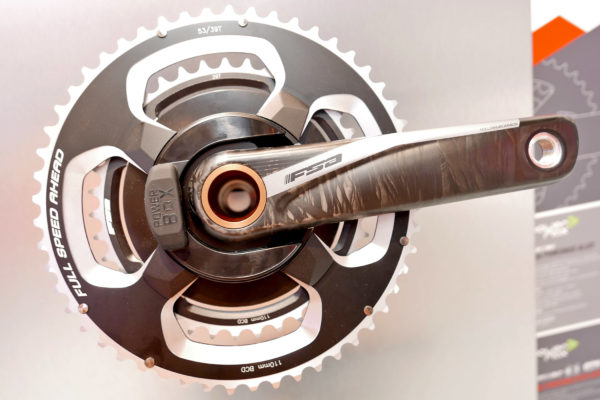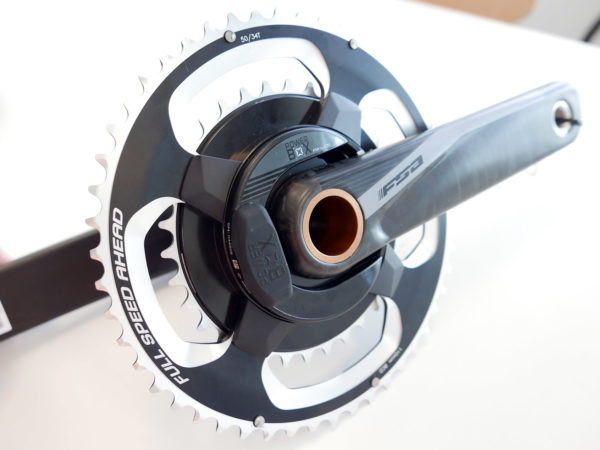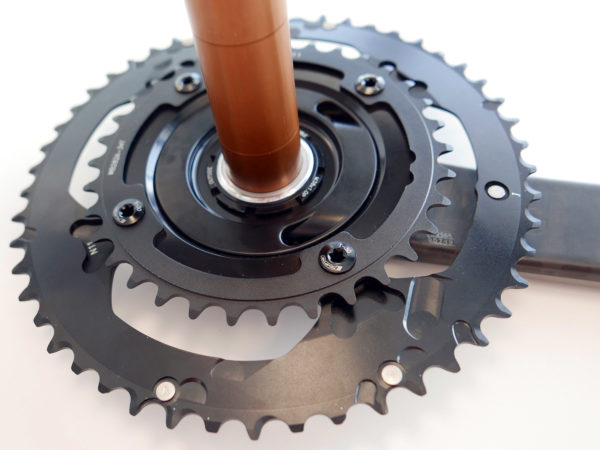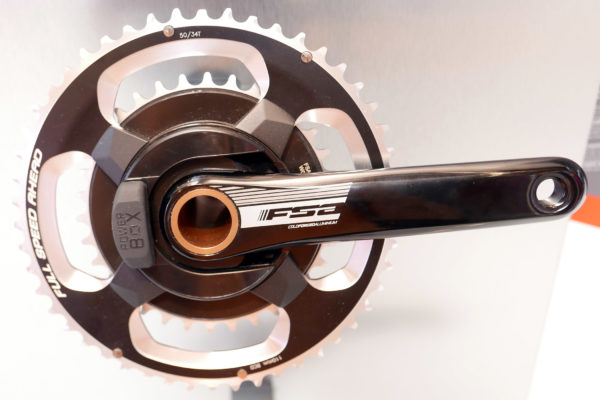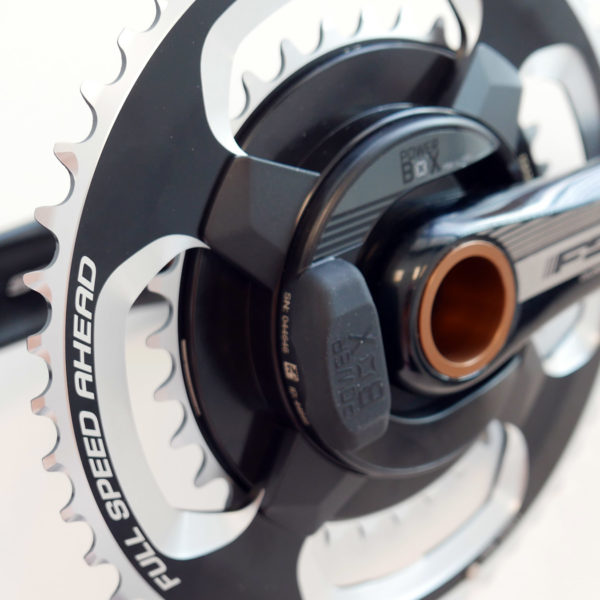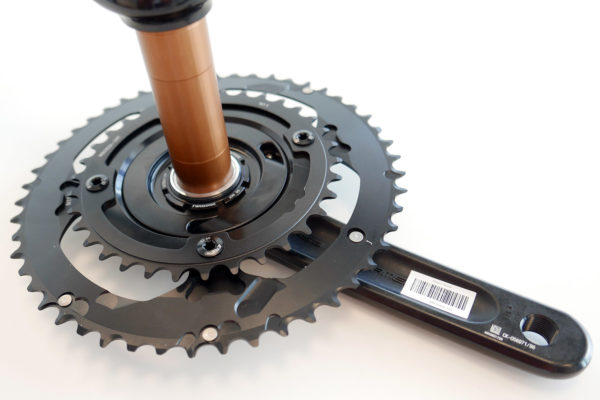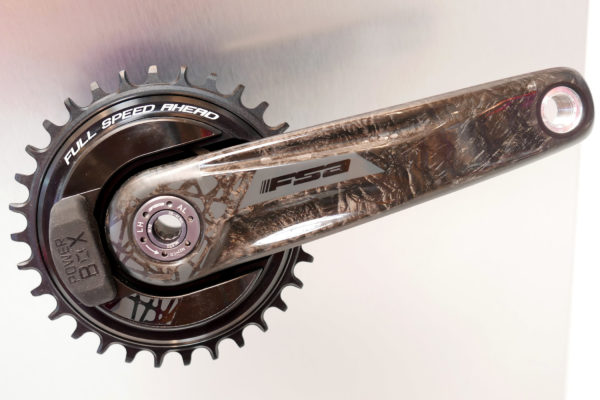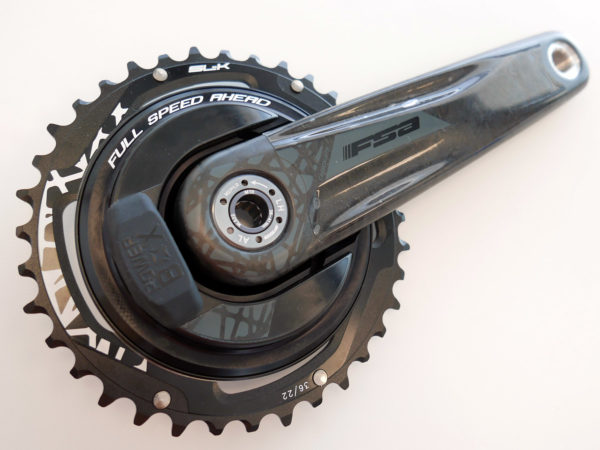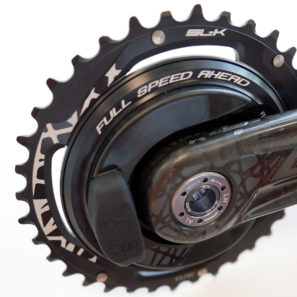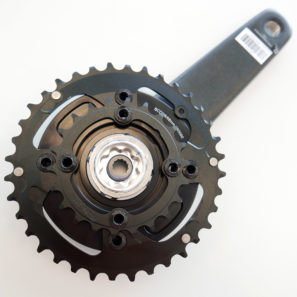After having made individual arms for Power2Max to mate to their own power metering spiders for a few years, FSA collaborated with the power meter maker to develop their own branded versions. FSA has been working hard in the last year or two to fill out their drivetrain line, tied-in with their road pro team sponsorship. So their new PowerBox Carbon power meter cranksets join the recently introduced K-Force WE and WE Disc groups to complete their top road spec offering. At the same time, an alloy version hopes to open up to the door to more OEM power meter specs, with a lower cost of entry. They’ve also taken the same tech and ported it over to a premium carbon trail riding crank, to give power metering capabilities in either a 1x or double form for mountain bikes looking to take their training up a notch. Check out the details and preliminary pricing after the break…
FSA PowerBox Carbon
FSA refined the PowerBox cranks while working with power data collection with Etixx, Bora & Cofidis whom they sponsor. The tech is pretty much the same as found on the power2max power meters, just with improved design integration and a more compact profile. That means it takes those key usability features, like auto zeroing (they reset zero output every time the cranks stop for more than 3 sec, so no need to manually zero them out on every ride), no cadence magnet needed (an internal accelerometer tracks cadence) and an easy to change battery that lasts for 300-400 hours (6-12,000km). The PowerBox is designed to work in all conditions from hot & dry to cold & wet, with built-in temperature compensation.
Power2max says that their power metering tech delivers ±2% accuracy in the new PowerBox. All of the new PowerBox power metering spiders are made in Germany and put onto FSA’s arms. The PowerBoxes transmit their power data via ANT+, and with firmware from power2max can also transmit over Bluetooth and estimate right-left power balance. Like the power2max, the PowerBox does not individually measure left and right. Its spider-based power meter means it does measure all power that gets put into the bottom bracket spindle, but uses software to estimate the right left balance, based on where in the crank rotation power is generated.
The PowerBox Carbon uses hollow carbon crankarms with a unidirectional finish designed to match the new K-Force WE groupset. The 30mm BB386EVO 7050 aluminum spindle can fit pretty much any road frame with FSA’s assorted separate bottom brackets. The complete cranks come with your choice of machined chain rings in road and cross configurations (53/39, 52/36, 50/34, 46/36) to fit on the 4-bolt asymmetric 110mm BCD spider. The carbon arms are available in 165, 170, 172.5, 175, 177.5 & 180mm lengths. Complete power metering cranksets (without a BB) are said to weigh 585g and are expected to retail for 1250€.
FSA PowerBox Alloy
The PowerBox Alloy cranksets share all of the same sensor tech as the carbon version with a cold forged aluminum set of arms. While the carbon power meter was developed for sponsored pros to be able to collect their power data in a brand correct package, the alloy version is all about getting more cyclists tracking power. With less than 200g weight penalty, but about half the retail price, FSA is intent of getting more power meters spec’ed on OEM bikes, and we’ve already spoke to a couple of bike manufactures who plan to offer the option in 2017.
The FSA PowerBox Alloy uses a forged 6061/T6 aluminum set of arms, and shares the same BB386EVO alloy 30mm spindle for frame compatibility. Chainring options are still fairly broad from standard to compact as the PowerBox Alloy also uses the same 4-bolt 110 BCD, but this lower priced crankset sticks with steel chainring bolts vs. alloy on the carbon version. Stock CX ring sizes are dropped, but replaced with a 48/32 gravel/adventure bike option. The black anodized power meter cranks claim a weight of 751g and will sell for 650€.
FSA PowerBox MTB Carbon
While both of the road cranks essentially share the same spider, the mountain bike version is a bit different. While it shares the same technical internals at the power2max powered road cranks, the PowerBox MTB Carbon uses a different spider that can be adapted for either single ring or double configurations. With that comes not just different ring sizes, but also different chainlines.
Of course it gets hollow carbon arms as well, brought over from FSA’s mountain bike side so they are built to take more trail riding abuse. The PowerBox MTB Carbon uses the 30mm equivalent alloy BB392EVO spindle like the road versions for maximum frame compatibility.
The PowerBox MTB Carbon also gets machined chain rings either in a narrow-wide MegaTooth design for good chain retention on the 1x version, or a standard 4-bolt 96/68mm BCD double. Single rings come with 34, 36, or 38 teeth, while the double is just available in a 36/24. The PowerBox MTB Carbons will come in 170 & 175mm lengths and at 485g are expected to sell for the same as the road carbon version.
No exact availability date has been set, but we’ve been told to look for them in early 2017.
